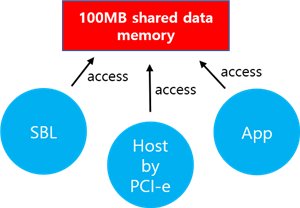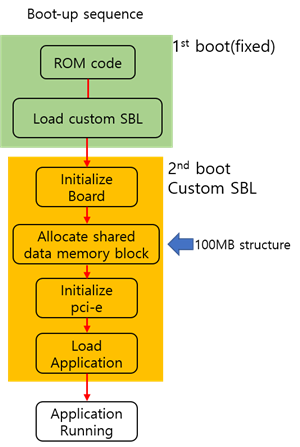Tool/software: TI-RTOS
Hello, I'm a very newbie on AM5728.
I'm using IDK5728 for new project.(we will make a custom board after firmware test)
I have one data memory block(such as one large array or structure which is about 100MB).
I'd like to share this data memory between SBL, Application and Host(pci-e).
The idk5728 work as pci-e end point.(The custome board will be pci-e card)
My application will do many things with this data memory block.(calculate, read/write).
Actually, this memory block is almost main data memory for application.
Host will access this data memory very often by pci-e.
So, speed is important.
So, I think my boot-up sequence should be like this...
=Requirement is..
1. I have to initialize pci-e ASAP.(in 100~200ms from power up)
2. SBL, application, host PC need to access one big data memory block(one big structure-100MB)
3. This data memory is on DDR memory(emif)
=Question is...
1. Is this boot-up sequence correct?
2. How to declare this data memory block on specific memory address?
3. When should I declare this data memory block?
4. Should I initialize pci-e in my application again?( I guess I should)
5. Is there a better way to do this?
Please...help me~~~~~!!!
Thank you and have a nice day!!



